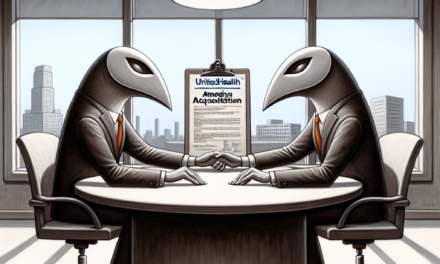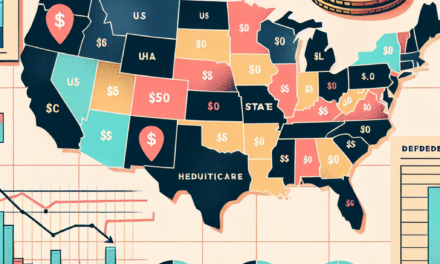AdvaMed’s Scott Whitaker Urges Senate for Tariff Relief During Hearing
In a recent Senate hearing, Scott Whitaker, the President and CEO of the Advanced Medical Technology Association (AdvaMed), made a compelling case for tariff relief on medical devices. His testimony highlighted the significant challenges faced by the medical technology industry due to tariffs imposed on imported goods. This article delves into the implications of these tariffs, the importance of medical technology, and the potential benefits of tariff relief for the industry and patients alike.
The Context of Tariffs in the Medical Technology Sector
The imposition of tariffs has been a contentious issue in the United States, particularly in the context of international trade relations. The medical technology sector, which includes a wide range of products from surgical instruments to diagnostic equipment, has not been immune to these changes. Tariffs can significantly impact the cost structure of companies operating in this space, leading to increased prices for consumers and reduced access to essential medical technologies.
According to a report by the U.S. International Trade Commission, the medical device industry contributes over $156 billion to the U.S. economy and employs more than 400,000 people. However, the introduction of tariffs has raised concerns about the sustainability of this growth. Whitaker’s testimony underscored the need for a balanced approach that considers both national security and the economic realities faced by the medical technology sector.
- Impact on Innovation: Tariffs can stifle innovation by increasing costs for research and development.
- Global Supply Chains: Many medical devices rely on components sourced from various countries, making them vulnerable to tariff fluctuations.
- Patient Access: Increased costs can lead to higher prices for patients, limiting access to necessary medical technologies.
- Competitive Disadvantage: U.S. companies may find it difficult to compete with foreign manufacturers that are not subject to the same tariffs.
- Job Losses: The medical technology sector is a significant employer; tariffs could lead to job losses in this critical industry.
Scott Whitaker’s Testimony: Key Points and Insights
During the Senate hearing, Scott Whitaker articulated several key points regarding the impact of tariffs on the medical technology industry. His testimony was not only a plea for relief but also a call to action for lawmakers to consider the broader implications of their decisions.
One of the central themes of Whitaker’s testimony was the need for a comprehensive review of the tariff policies affecting medical devices. He argued that the current tariff structure disproportionately affects U.S. manufacturers and could hinder their ability to compete globally. Whitaker emphasized that the medical technology industry is unique in its reliance on a global supply chain, where components are often sourced from multiple countries.
Whitaker also highlighted the potential consequences of continued tariff imposition, including:
- Increased Costs: Tariffs lead to higher costs for manufacturers, which are often passed on to consumers.
- Delayed Access to Innovations: New technologies may take longer to reach the market due to increased production costs.
- Investment Uncertainty: Companies may hesitate to invest in new projects or expansions due to unpredictable tariff policies.
- Global Competitiveness: U.S. companies may lose market share to foreign competitors who are not subject to similar tariffs.
- Healthcare Disparities: Increased costs can exacerbate existing disparities in healthcare access and outcomes.
The Economic Impact of Tariffs on the Medical Device Industry
The economic ramifications of tariffs on the medical device industry are profound. The sector is characterized by high research and development costs, and any increase in operational expenses can have a cascading effect on innovation and market competitiveness.
According to a study by the Medical Device Manufacturers Association (MDMA), tariffs on medical devices could lead to a loss of approximately $1.5 billion in annual revenue for U.S. manufacturers. This figure underscores the potential for significant economic disruption within the industry. Furthermore, the study indicated that job losses could reach upwards of 20,000 positions if tariffs remain in place.
Moreover, the economic impact extends beyond manufacturers. Healthcare providers, including hospitals and clinics, may face increased costs for medical devices, which can lead to higher prices for patients. This is particularly concerning in a healthcare landscape where affordability is already a pressing issue.
- Job Creation vs. Job Loss: While tariffs are often justified as a means to protect domestic jobs, the reality is that they can lead to job losses in the medical device sector.
- Investment in Innovation: Companies may divert funds from innovation to cover increased costs, stifling advancements in medical technology.
- Market Dynamics: Tariffs can alter market dynamics, leading to reduced competition and higher prices for consumers.
- Long-term Viability: The long-term viability of U.S. medical device manufacturers could be jeopardized if tariffs remain in place.
- Global Supply Chain Disruptions: Tariffs can disrupt established supply chains, leading to delays and increased costs for manufacturers.
Case Studies: The Real-World Effects of Tariffs
To better understand the implications of tariffs on the medical device industry, it is essential to examine real-world case studies that illustrate the challenges faced by companies in this sector.
One notable example is the case of a U.S.-based manufacturer of surgical instruments that relies on components sourced from various countries. Following the imposition of tariffs, the company reported a 15% increase in production costs. This increase forced the company to make difficult decisions, including laying off employees and delaying the launch of new products. The company’s CEO stated that the tariffs had a direct impact on their ability to innovate and compete in the global market.
Another case involves a small medical device startup that developed a groundbreaking diagnostic tool. The startup faced significant challenges due to tariffs on imported components necessary for their product. As a result, they were forced to increase their prices, which limited their market reach and delayed their entry into the healthcare market. This case highlights how tariffs can disproportionately affect smaller companies that lack the financial resources to absorb increased costs.
- Impact on Large Corporations: Larger companies may have more resources to navigate tariffs, but they still face significant challenges in maintaining competitiveness.
- Challenges for Startups: Startups often lack the financial cushion to absorb increased costs, making them particularly vulnerable to tariff impacts.
- Long-term Consequences: The long-term consequences of tariffs can include reduced innovation and market stagnation.
- Global Competitiveness: Companies that rely on global supply chains may find it increasingly difficult to compete with foreign manufacturers.
- Consumer Impact: Ultimately, consumers bear the brunt of increased costs, leading to higher healthcare expenses.
The Path Forward: Advocating for Tariff Relief
In light of the challenges posed by tariffs, Scott Whitaker’s call for tariff relief is a crucial step toward ensuring the continued growth and innovation of the medical technology industry. Advocating for policy changes that support the sector is essential for maintaining the United States’ position as a leader in medical technology.
One potential avenue for achieving tariff relief is through legislative action. Lawmakers can work to revise existing tariff policies to better reflect the unique needs of the medical technology sector. This may involve creating exemptions for specific medical devices or components that are critical for innovation and patient care.
Additionally, fostering collaboration between industry stakeholders and government officials can lead to more informed decision-making regarding tariff policies. Engaging in dialogue with manufacturers, healthcare providers, and patient advocacy groups can help ensure that the voices of all stakeholders are heard in the policymaking process.
- Legislative Revisions: Advocating for changes to existing tariff policies can help alleviate the burden on the medical technology sector.
- Stakeholder Collaboration: Engaging with various stakeholders can lead to more comprehensive and effective policy solutions.
- Public Awareness: Raising awareness about the impact of tariffs on healthcare can mobilize public support for tariff relief initiatives.
- Long-term Strategy: Developing a long-term strategy for tariff relief can help ensure the sustainability of the medical technology industry.
- Global Competitiveness: Supporting policies that enhance global competitiveness can benefit both manufacturers and patients.
Conclusion: The Importance of Tariff Relief for the Medical Technology Industry
Scott Whitaker’s testimony before the Senate serves as a critical reminder of the challenges faced by the medical technology industry in the wake of tariff imposition. The economic implications of these tariffs are far-reaching, affecting not only manufacturers but also healthcare providers and patients. As the industry grapples with increased costs and reduced access to essential medical technologies, the call for tariff relief becomes increasingly urgent.
By advocating for policy changes that support the unique needs of the medical technology sector, stakeholders can work together to ensure the continued growth and innovation of this vital industry. The path forward requires collaboration, public awareness, and a commitment to fostering an environment where medical technology can thrive. Ultimately, the goal is to enhance patient access to life-saving technologies while maintaining the United States’ position as a leader in medical innovation.





